Construction of the Main Body Pieces
OK, starting this phase was the scariest part of this project so far. We were going to have to drill holes into this beautiful body and neck. And we had to do this very accurately the first time. We tried to take our time laying everything out to really make sure we were measuring and placing everything correctly. We started by laying all the major parts out on the bench and staring at them for a while.
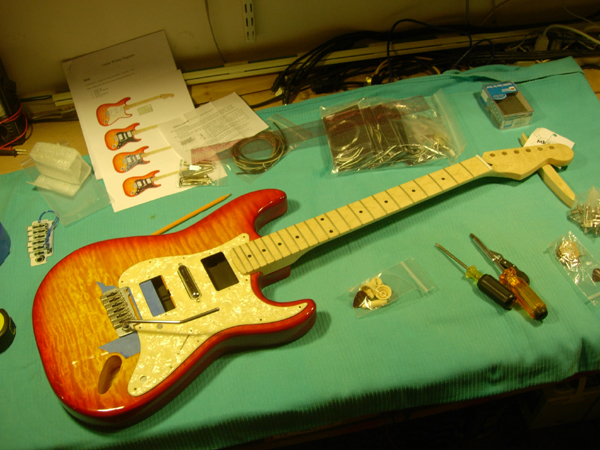
All of the major parts spread out on the bench.
As you can see, we used painter's tape on the body to markup where the bridge should be. Even before drilling the neck, we used a long straight edge on either side of it to mark the tape, so we could make sure the bridge was going to fit in the tremolo route and be centered correctly (we later needed to extend the route a little bit to accommodate the tremolo arm mount). we also used these marks to make sure the pickguard would line up correctly. It did, although we ended up having to trim the area around the neck, as this neck hung over the neck pocket to accommodate two extra frets, and the overhang was not high enough to clear the pickguard. we measured everything numerous times so we wouldn't get into the "we cut it three times, and it was still too short!" syndrome.
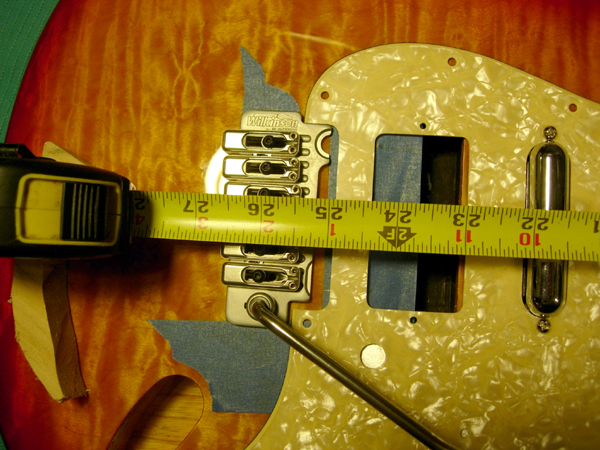
Checking that we can get the proper scale measurement with the big pieces in place.
The other end of the tape measure is on the edge of the nut.
After staring at everything for a while, we decided to place the pickguard first. This was partly so we could start with two very small holes that we could deal with fairly easily if they turned out to be in the wrong place. This also gave us our first somewhat fixed reference point for the neck and bridge.
The next step was the neck. The pocket was a perfect fit for the neck, so it was relatively easy to keep it in position with the guitar upside down while we marked the location of the screw holes we needed to drill into the neck. We happened to have a punch whose diameter was a perfect fit through the pre-drilled holes in the body. It didn't have a point, but with a light tap of a hammer, we had a nicely centered round dent where each screw hole needed to be.
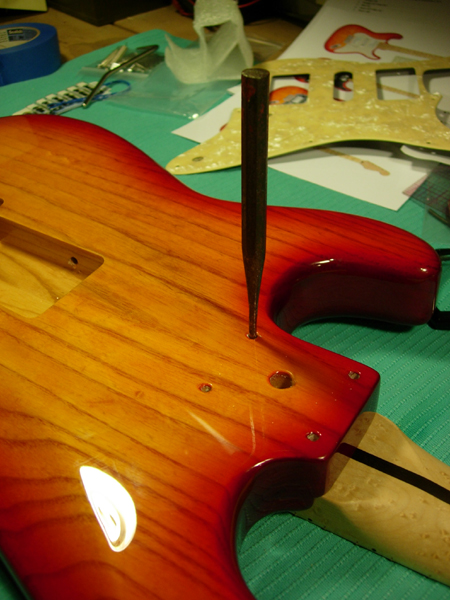
Locating the position for the neck screws.
Being careful not to drill too deep, we used a drill press to drill the holes in the neck. Before mounting the neck, we also had to trim the pickguard to fit around the neck overhang, as the overhang was not high enough to clear the pickguard. With the pickguard temporarily screwed in place, we positioned the neck in the pocket, and marked the pickguard.
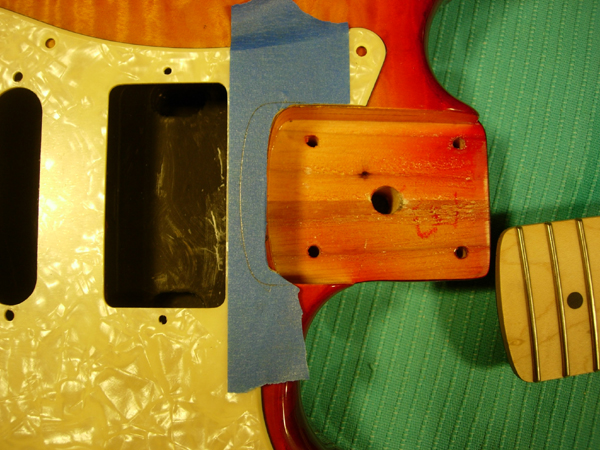
Marking the pickguard for trimming.
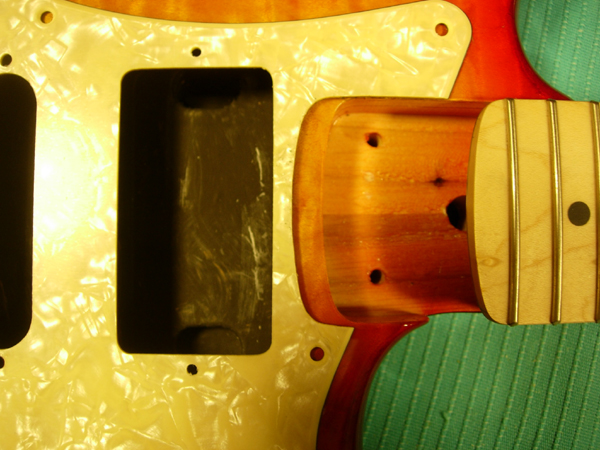
Pickguard after being trimmed. Originally it went up to the neck pocket.
After trimming the pickguard with a rattail file (which worked out fine, actually, but took a while), we went to eBay and bought a Dremel tool for the next project! After fitting the pickguard, we bolted on the neck with the neck plate, and just two screws for now.
The next step was the bridge. This is slightly different than the vintage Strat 6 hole tremolo bridge, in that it just uses two studs for the pivot points. This is easier to line up, as you don't have to drill 6 holes perfectly, but still a bit unnerving, as they are big holes (3/8"), and have to be drilled to an exact depth. The supports for the studs are knurled, and are driven into the holes with a hammer, and need to bottom out so the tops are flush with the body. For this, we used a 3/8" Forester bit and a drill press. We were able to set a stop on the drill press to accurately drill to the proper depth. The Forester bit does a wonderful job of starting through the finish and produces a very clean hole.
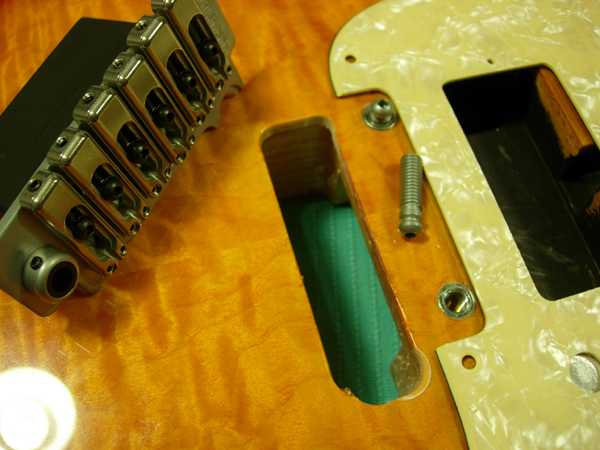
The tremolo bridge pivot studs mounted in the body.
As you can partially see from the picture above, the bridge pickup route doesn't quite line up with the pickguard, so a little adjustment was required. Rather than try to use a router and risk scratching the body, we again turned to the drill press and a larger Forester bit. This did not need to be a very accurate cut, but it worked quite well.
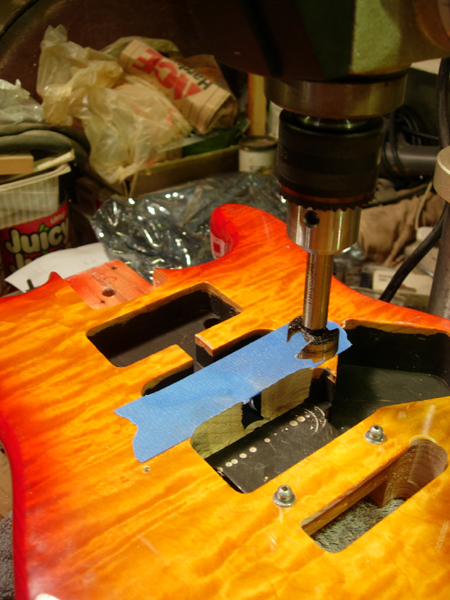
Trimming the bridge pickup route with a Forester bit in the drill press.
You can also see a minor trim to the right side of the tremolo route.
At this point, the major drilling and trimming was done, except for the two holes in the pickguard for the two toggle switches. Time for another mockup! we mounted the center pickup into the pickguard (the other two were still mounted on another guitar), and the jack plate, and its starting to look like the picture!
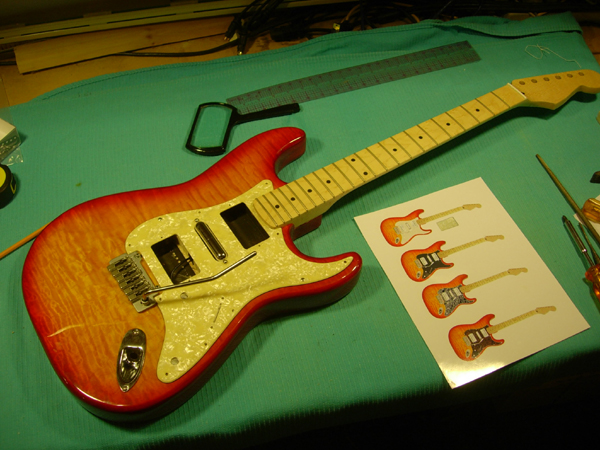
Starting to look like the picture!
Again, we used the drill press with Forester bits, which drilled very nicely through the plastic pickguard, for the toggle switch holes.
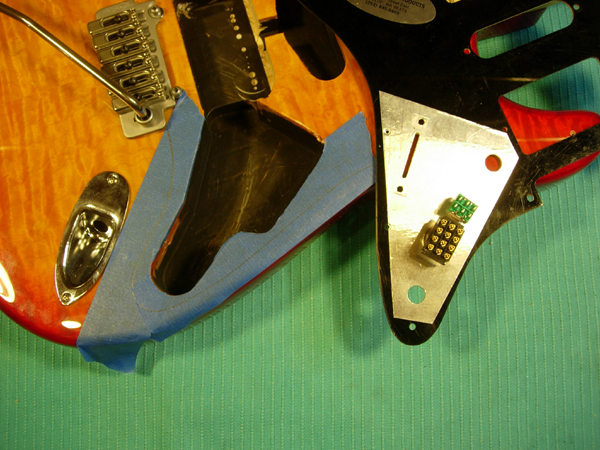
Mounting the toggle switches - underside of pickguard.
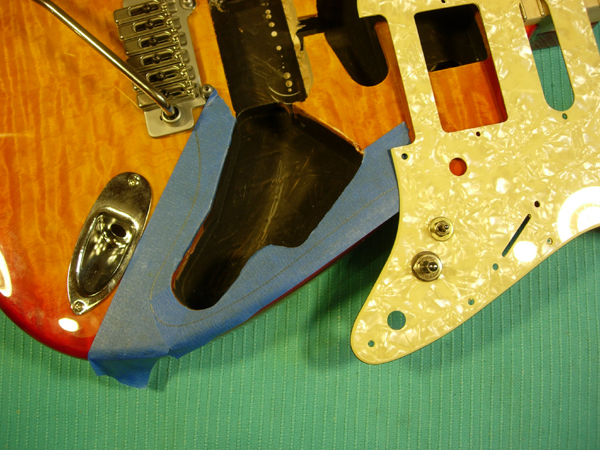
The toggle switches mounted on the pickguard.
We then removed the humbuckers from the Hohner and mounted them into the pickguard as well. After mounting the Tele style switch, and remounting the pickguard, we now have a good idea of how this thing is going to look.
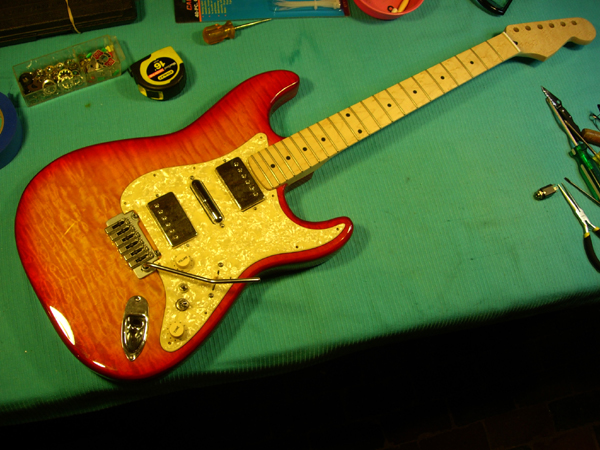
All of the major parts in place.
We still needed to mount the tuners, and do a little dressing of the fret ends, which seemed a bit sharp still, and actually wire the pickups and switches up. We also planned to shield the cavities with copper foil (this has not been done yet, but hum doesn't seem to be a problem without it).
Well, here we are at this point. We have combined the original Photoshop mockup with a picture of the actual guitar at this point. As you can see, the Photoshop mockup did a good job of predicting how this will look (in case you aren't sure, the real one is on the bottom...).
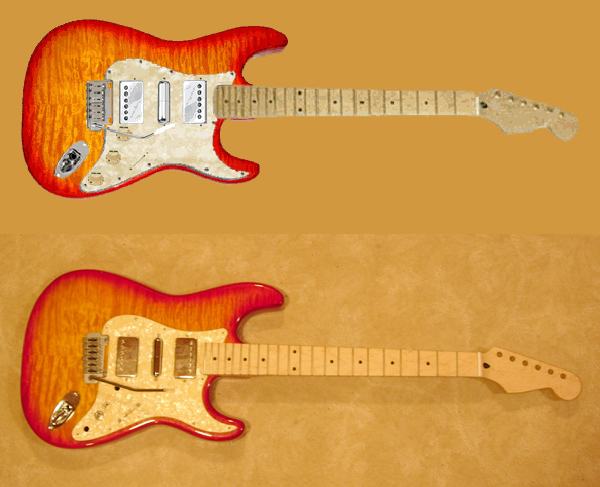
At this point we were very happy with the results! Besides the tuners and frets, the next step was wiring up the electronics.


